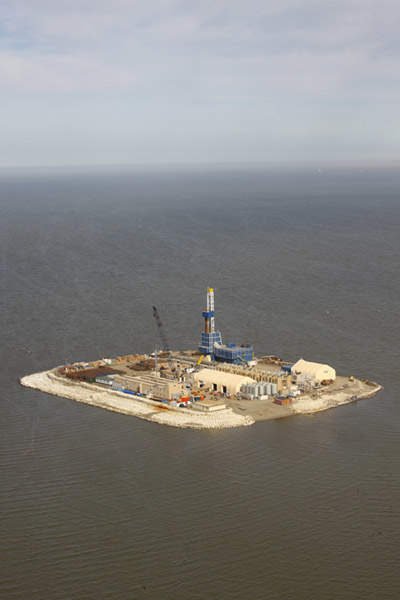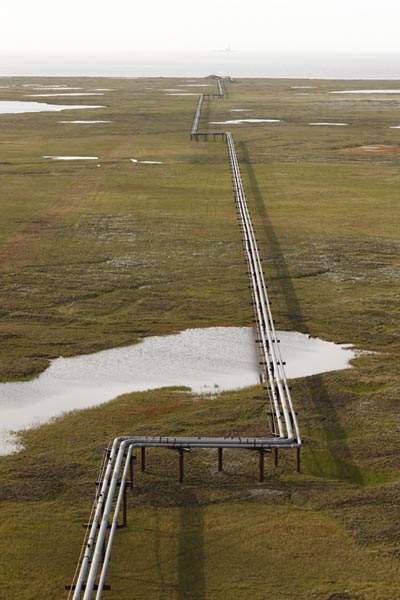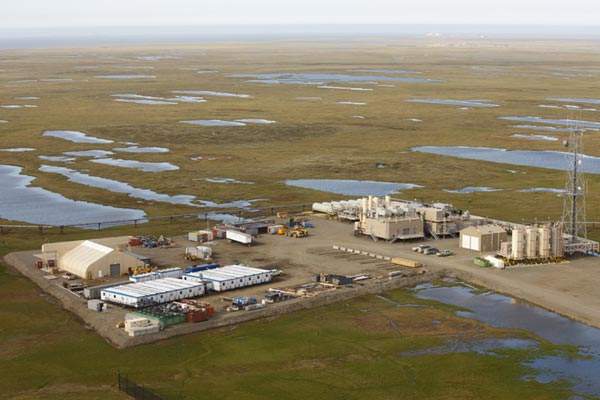The Oooguruk offshore oil field is located in the North Slope of Alaska, about 250km southeast of Barrow, five miles offshore from Harrison Bay in the Beaufort Sea, at an average water depth of about 1.5m.
Texas-based Pioneer Natural Resources is the operator and has a 70% working interest, which it acquired in 2002. Italian major Eni holds the remaining 30%, which it acquired through the purchase of the Alaskan assets of Armstrong Oil & Gas in August 2005.
Premier is the first independent smaller operator to run a field in the North Slope, using the North Slope Facility Sharing Agreement to break the monopoly of majors such as BP, ConocoPhillips and ExxonMobil.
The $500m development, to tap the Kuparuk and Nuiqsut reservoirs that form the Oooguruk field, was sanctioned in early 2006 after Pioneer had drilled three exploration wells during the winter of 2003 to test a possible extension of the productive sands in the Kuparuk River field.
Although the three wells found the sands filled with oil, they were too thin to be considered commercial on a standalone basis. But the wells also encountered thick sections of oil-bearing Jurassic-aged sands, and the first well flowed at a rate of about 1,300bopd.
Production, which began in June 2008, comes from two zones, the Nuiqsut and Kuparuk C sand reservoirs, which produce 22° API and 25° API oil respectively. Most of the production comes from Nuiqsut.
Initially producing at a rate of about 3,000bopd, Pioneer anticipates peak gross production by 2010 of 15,000-20,000bopd from about 40 horizontal development wells, about half of which will be producing wells and half injection wells, which will be drilled between 2008 and 2011. The gross oil resource potential from these base development wells is put at up to 90m barrels, before expansion opportunities, and the field’s commercial life is expected to be 25 to 30 years.
The project consists of three main components – an offshore drill site, an onshore interconnect and production support facility, and a system of flowlines, power cables, and communications cables connecting the onshore and offshore facilities. Its development was complicated by the Arctic weather and seasonal constraints on transport and logistics, hence the project’s disproportionately high cost.
The offshore drill site is a six-acre, 4m-high artificial gravel island about 9km from the shoreline, completed in April 2008 and with facilities for development drilling and field operations. The facilities include wellbay and truckable modules for well testing, electrical power distribution and communications systems.
Support utilities include quarters for up to 76 people and a helideck.
The drill rig, a Nabors 19E, has had to be modified to make it suitable for Arctic operation, and the wells are being drilled at 2.3m spacings – closer than normal for the North Slope – to allow for the large number of them running up to the normally unmanned island.
Onshore facilities consist of production, power and control, and operations support modules. The production modules include a two-phase production separator, production heaters, two multiphase production meters and injection gas compressors.
Power generation facilities include three 5.5MW gas-fired turbines to power all the onshore and offshore production and drilling facilities. Operations support utilities include back-up power generation, warehouse and maintenance shop.
Produced liquids are sent to Premier’s onshore facility, the Tie-in Pad, using a subsea flowline bundle running for the 9km from the offshore island, then for another 3.5km or so to the pad. The liquids are then transferred to the Conoco-operated Kuparuk River Unit for processing,
The flowline bundle consists of a 12in multiphase pipeline, designed by Intec Engineering of Houston, to carry production from the island to shore. This line sits within a 16in pipe that provides secondary containment. The bundle also includes an 8in water line to take water to the island for injection to maintain reservoir pressure, a 6in line to carry natural
gas for enhanced oil recovery and a 2in Arctic heating fuel line.
The bundle is designed as an open bundle, where the individual pipes are strapped together rather than enclosed in a single large pipe. According to Intec, this makes it less complex and less heavy than a closed bundle, but with no increase in risk.
After processing, sales-quality oil is then delivered back to Pioneer and sold prior to Pump Station 1 of the Trans Alaska Pipeline System.
Anchorage-based HC Price Construction completed the pipeline installation in April 2007. The other contractors for the project were TriOcean and EEIS on the engineering side, and VECO, Nanuq and Alcan on the construction side.










